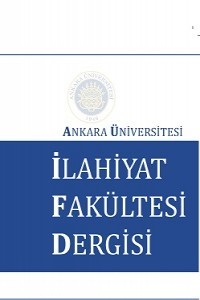Bu makale Sünni ve Şiî tefsirde Hâricîlerle İbâdîlere bakış açısını değerlendirmektedir. Her ne kadar Hâricîler erken dönemde İslam ümmeti arasında ciddi bölünme ve kaosa sebep olmuşlarsa da üçüncü-dördüncü asırdan sonra tamamen marjinalleşerek ortadan kalkmışlardır. Geride ise bugün Hâricîlikle ilişkili olduklarını bile kabul etmeyen ve belirli bölgelerde yaşayan İbâdî gruplar kalmıştır. Bu makale, Hâricî dışı kaynakların Hâricîleri hâlâ potansiyel bir tehlike olarak gördükleri için Müslümanların şuur altında bu tür ifratları devamlı canlı mı tutmak istedikleri, yoksa Hâricîlik’i daha çok genel geçer bir akım olarak görüp her zaman nüks edebilecek bir hastalık olarak mı telakki etttikleri sorusunu ele almaktadır. Özellikle de müfessirlerin, Kur’an metni bağlamında, İslam toplumunun selameti için Hâricîlik düşüncesi hakkında nasıl bir tarih inşa ettikleri ve tefsir metinlerini bu çerçevede nasıl kullandıkları tartışılacaktır
“The Other” Among Us: The Perception of Khārijī and Ibāḍī Islam in the Muslim Exegetical Traditions
This article analyses the perception of Khārijī and Ibāḍī Islam in Sunni and Shi‘i Qur’anic commentaries and compares the depiction of these groups by their opponents with the actual teachings of the Ibāḍiyya as expressed in their exegetical, legal and theological literature. As will be shown, misrepresentations abound: the Khārijīs and Ibāḍīs assume the role of the paradigmatic “other,” characterised by heresy, takfīr, excessiveness and the spreading of discord (fitna). This negative image has certain roots in the early history of Islam, but is maintained by exegetes and historians of exegesis until today, even though the target of their polemics has long disappeared and in spite of the availability of sources that provide a more accurate idea of Khārijī, and specifically Ibāḍī, beliefs. The need to construct a cautionary tale of an internal enemy provides a motivation to adopt the anti-Khārijī narrative from earlier exegetes instead of verifying stereotypes about the alleged theological, ritual and juridical differences between the Khārijiyya and other branches of Islam. In reality, the differences between Ibāḍī Islam and mainstream Sunni and Shi‘i beliefs are relatively small in many respects. Still, most exegetes go so far as to ahistorically assign an anti-Khārijī agenda to the Qur’anic text itself, which shows that self-assertion and the drawing of boundaries are functions of tafsīr that are at times more powerful than the quest for the meaning of the text
Keywords:
Khawārij, Ibāḍīs, Exegesis, Heretic Groups, Mainstream Islam, Shi‘ites,
___
- ISSN: 1301-0522
- Yayın Aralığı: Yılda 2 Sayı
- Başlangıç: 1952
- Yayıncı: ANKARA ÜNİVERSİTESİ > İLAHİYAT FAKÜLTESİ
